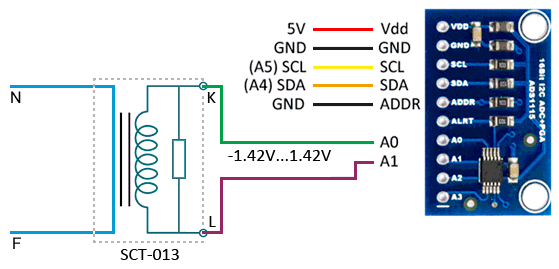Other Parts Discussed in Thread: ADS1015,
Hi every one!!
I am new in the forum, hope can help me¡¡
I am working with Arduino DUE, two SCT-013 50A/1V and the ADS1115 in differential mode, i connect the first SCT-013 on A0/A1 channels and the second one on A2/A3 channels, i am using the Adafruit_ADS1015 library, when i am measuring one charge on any of the two differential ports don't have any problem, the readings are OK, but when i have two charges simultaneously, I get estrange readings in both differential ports, its seems to be a interference or noise input between the channels.
How can i fix the problem?.
Thanks in advanced.
Greetings.




